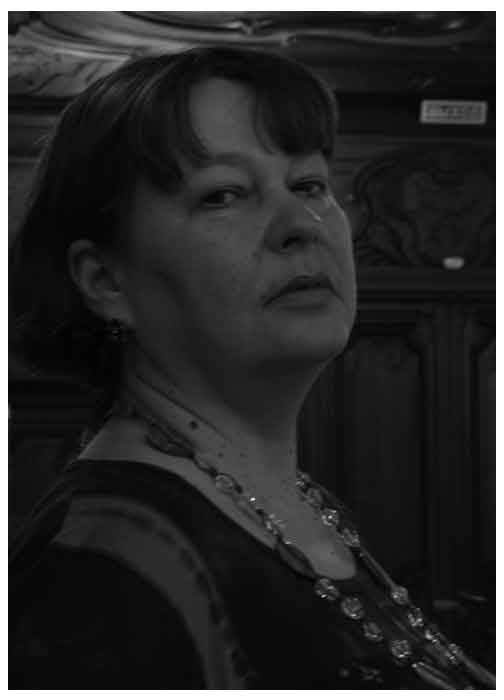Natalia Pushnina

Natasha Pushnina has three great passions; painting, the urban landscape, and travelling. These passions feed so richly into each other that they make up the very substance of her life; her insatiable passion for "collecting” cities and towns keeps her moving, and each newly discovered treasure drives her to paint.
On her travels, Pushnina has subjected the urban landscapes of Croatia, England, France, Germany, Italy, and her native Russia to her own personal vision, a vision which transforms banal utility or tourist clichés into jewels of colour, where playful contours are juxtaposed with rhythmic details, and deep, moody skies fight against consciously flattened planes of colour.
Though a figurative artist, Pushnina nonetheless objectifies her subject; flattening colour, disregarding shadow, employing stylised drawing to decorative effect, so that her canvasses occasionally suggest tapestry (19, 20) or the geometric abstraction of a Mondrian. Her palette is a rich and sometimes surprising fusion of Russian and French traditions. In the muted, subtle palette she favours when painting provincial Russia, there is everything of the Russian Academy which nourished her and her parents, while her Petersburg and European inspired works hold echoes of Matisse and the fauvists, especially Derain. The Gallic influence is not surprising in itself – the historic Franco-Russian relationship ensures that Russian artists consider the French tradition as their birth-right – the surprise is rather in the extraordinary synthesis of subject and colour sometimes afforded by Pushnina’s refusal to abandon her deeply personal choice of hue. The result is a delightful frisson where we are astonished by an almost fauvist St Petersburg whilst Paris and Burgundy are invaded by the blue-green verdure of the artist’s Baltic origins.
Pushnina’s compositions are beguiling too. She strives to find unusual view points which, while satisfying her own aesthetic sense, invite us to look again. Even the most photographed places become unfamiliar; in London she presents us with the underside of Blackfriars Bridge, while in Rome, she blocks our view with the stone gateway of the Forum Romano, its pillars revealing only staccato impressions of the buildings behind.
Sometimes her buildings audaciously crowd the canvas as if forcing us to contemplate the claustrophobia of city life. However, Pushnina’s true desire in these "closed” paintings is to celebrate the quirkiness of a particular building, to present us with its actual "portrait”. The "building as personality” dominates her Russian Province series where wooden buildings are truly handmade and recount the ravages of time as eloquently as any human face. It is interesting to note that here Pushnina varies her manner of painting, fracturing her characteristic strong blocks of colour, her touch becoming less fluid, as if she were allowing the entropy of provincial Russia to suffuse her very canvasses.
Most compositions however include an opening; a chink of sky squeezed between blocks, a side street inviting us onwards, or exits stage right or left either side of a corner.
But if city streets are stage-sets for their inhabitants’ daily dramas, then where are Pushnina’s people? Occasionally one may glimpse a couple or a stiff backed grandmother and, more often, somebody briskly walking a dog across the canvas. But one feels that these have no intrinsic significance and, merely serving the composition in terms of colour or movement, are reminiscent of figures inserted into architects’ projects to give a notion of reality. Pushnina’s empty streets contain none of the de Chirico surrealist menace however. Rather, Pushnina is absorbed by human diversity and eccentricity and for her, cities represent humanity’s greatest collective expression. Instead of urban angst she provides us with a vision of the city contained, objectified, captured in time now and forever; the multifaceted, fractured reality which characterises both the existential and physical nature of urban life is here crystallised by one subjective, human perception ready to be re-digested by a multitude. Pushnina does not paint people; she presents humanity with an aspect of itself.
Elizabeth Simoneau, International Association of Art Critics (AIS-AICA)
Burgundy, France
October 2007